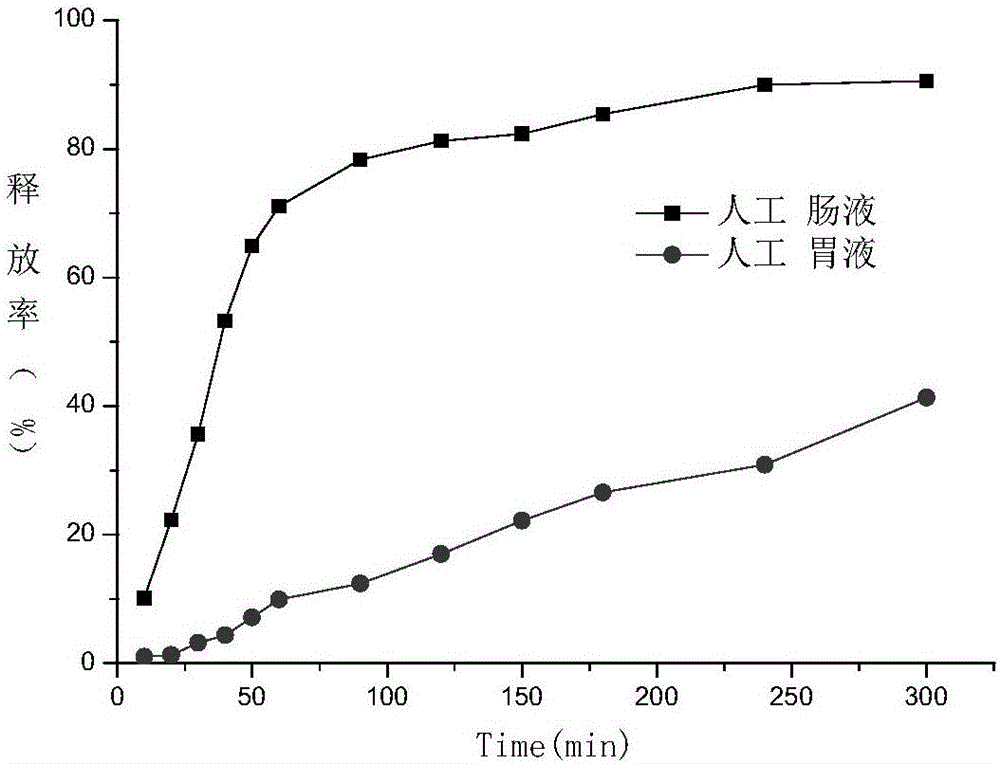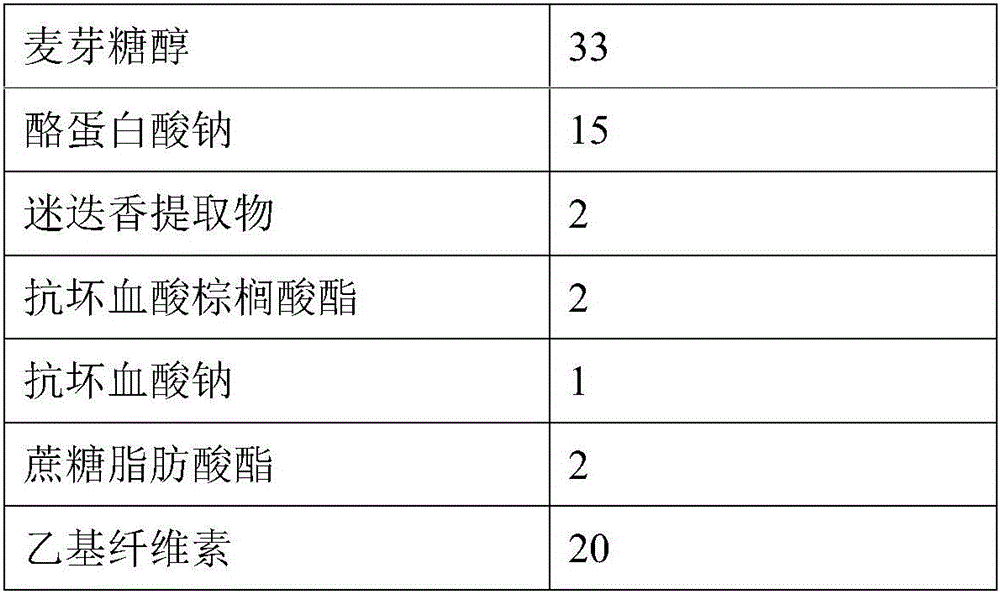Sugar-free beta-carotene microcapsules and preparation method thereof
A carotene and microcapsule technology, which is applied in the field of sugar-free beta-carotene microcapsules and its preparation, can solve the problems of product discoloration, stability affecting the quality of acidic beverage products, affecting product appearance, etc., and achieving stable product quality and product quality. Formulated to be scientifically healthy and improve bioavailability
- Summary
- Abstract
- Description
- Claims
- Application Information
AI Technical Summary
Problems solved by technology
Method used
Image
Examples
Embodiment 1
[0041] Recipe composition:
[0042]
[0043]
[0044] Dissolve sodium caseinate, maltitol, and sodium ascorbate in 110 parts of water, preheat to 50°C, and set aside. The mixture of β-carotene crystals with a UV content of 98%, rosemary extract, ascorbyl palmitate, sucrose fatty acid esters, and sunflower oil was ground with a ball mill for 100 minutes under nitrogen protection until the particle size did not exceed 1 μm. Carotene crystals are crushed and stabilized in suspension. The resulting β-carotene oil suspension was injected continuously into a high-temperature coil (temperature 120° C.) with 0.6 Mpa nitrogen under high pressure for instant melting for 5 seconds to further refine the β-carotene crystals. Then, it is continuously sent into the colloid mill together with the aqueous phase solution to shear to prepare colostrum, and then homogenized by a high-pressure homogenizer at a homogenization pressure of 30 MPa to obtain an emulsion with an oil droplet size of...
Embodiment 2
[0046] Recipe composition:
[0047] recipe ingredients Feed amount (parts) β-carotene crystals 1.3 Corn oil 23.7 Maltitol 33 sodium caseinate 6 Ascorbyl Palmitate 0.3 sodium ascorbate 0.2 Polyglyceryl Fatty Acid Ester 0.5 Polyvinylpyrrolidone 35
[0048] Dissolve sodium caseinate, maltitol, and sodium ascorbate in 110 parts of water, preheat to 55°C, and set aside. The β-carotene crystals with a UV content of 98%, ascorbyl palmitate, natural VE, polyglycerol fatty acid esters and corn oil were ground with a ball mill for 100 minutes under nitrogen protection until the particle size did not exceed 1 μm, and the β-carotene crystals were crushed And stable suspension. The resulting β-carotene oil suspension was injected continuously into a high-temperature coil (temperature 110° C.) with 0.6 Mpa nitrogen under high pressure for instant melting for 10 seconds to further refine the β-carotene crystals. Then, it is co...
Embodiment 3
[0050] Recipe composition:
[0051] recipe ingredients Feed amount (parts) β-carotene crystals 13 Soybean oil 12 Maltitol 33 sodium caseinate 5 Natural VE 5 Ascorbyl Palmitate 3 sodium ascorbate 2 Polyglyceryl Fatty Acid Ester 8 Ethyl cellulose 19
[0052] Dissolve sodium caseinate, maltitol, and sodium ascorbate in 110 parts of water, preheat to 60°C, and set aside. The β-carotene crystals with a UV content of 99%, ascorbyl palmitate, natural VE, polyglycerol fatty acid esters and soybean oil were ground with a ball mill for 100 minutes under nitrogen protection until the particle size did not exceed 1 μm, and the β-carotene crystals were crushed And stable suspension. The resulting β-carotene oil suspension was injected into a high-temperature coil (at a temperature of 130° C.) with 2 Mpa nitrogen gas under high pressure and continuously melted for 30 seconds to further refine the β-carotene crystals. Th...
PUM
 Login to View More
Login to View More Abstract
Description
Claims
Application Information
 Login to View More
Login to View More - R&D
- Intellectual Property
- Life Sciences
- Materials
- Tech Scout
- Unparalleled Data Quality
- Higher Quality Content
- 60% Fewer Hallucinations
Browse by: Latest US Patents, China's latest patents, Technical Efficacy Thesaurus, Application Domain, Technology Topic, Popular Technical Reports.
© 2025 PatSnap. All rights reserved.Legal|Privacy policy|Modern Slavery Act Transparency Statement|Sitemap|About US| Contact US: help@patsnap.com



